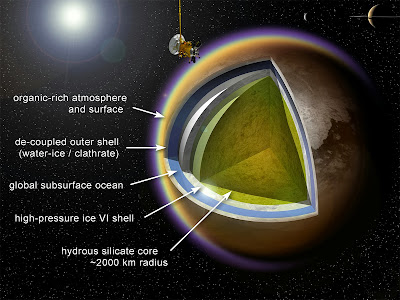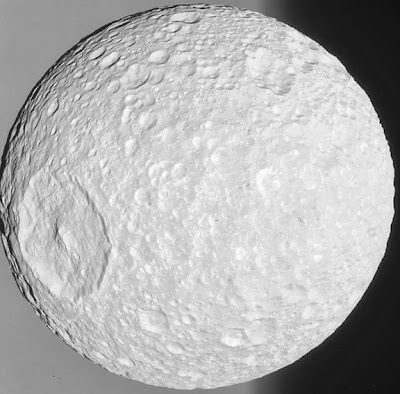Space exploration had eluded mankind for thousands of years, until the invention of the telescope. However, man always needed more information, and in the late 20th century, we started doing things that many thought would be impossible, exploring extra-terrestrial bodies by sending space crafts on the surface of planets or moons. So here are some astonishing planets and moons that we have explored up till now.
As Venus is our closest neighbour � 38 million kilometres away at times � it was the first to be �probed.� On March 1, 1966, the Venera 3, a Soviet-controlled space probe crash-landed on Venus. However, it was not until 3 years later that the Venera 7 landed on Venus, the first man-made spacecraft to successfully land on another planet and send back data.
The Moon is the closest extra-terrestrial body to Earth, and therefore is the most explored. The first ever mission to the Moon was the Soviet Luna 1(1959), It only took 36 hours to make the trip to moon, therefore travelling an average speed of 10,500 km/hr. The Apollo 11 mission in 1969 saw the first human, Neil Armstrong, walk on the moon, one of the most memorable events in mankind�s history.
Mars 2 lander(27 November 1971) became the first man-made object to reach the surface of Mars but no contact after crash landing. Most exploring mission is The �Curiosity� Rover landed on Mars in August 2012, it has been heavily explored recently due to the prehistoric possibility of its life-sustaining capabilities and has been performing geological research ever since landed.
One of Saturn�s largest moons, Titan, was explored by the Cassini�Huygens spacecraft in July 2004, It was a Join Mission by NASA,ESA and ASI. it has been said that many of its landscapes had been formed by flowing waterways, a feat that is unmatched in outer-space.
As we are talking about most exploring missions, MESSENGER is second NASA mission to Mercury, was launched on August 3, 2004. Most of the hemisphere not imaged by Mariner 10 has been mapped by MESSENGER, also the first orbital image of Mercury was obtained on March 29, 2011 and it is still active.
Io is the innermost of the four Galilean moons of the planet Jupiter. In 1979, two Voyager spacecraft(NASA) revealed Io to be a geologically active world, with numerous volcanic features, large mountains, and a young surface with no obvious impact craters.The Galileo spacecraft(NASA) performed several close flybys in the 1990s and early 2000s, obtaining data about Io's interior structure and surface composition.
Most of the information collected on Europa, another one of Jupiter's moons, was taken by the Galileo mission(NASA), launched in 1989, that flew by Europa to gather data. It was concluded that there may be a water ocean beneath the silica rock surface, and extra-terrestrial life may be apparent.
Ganymede is a satellite of Jupiter and the largest moon in the Solar System. There have been various flybys(Voyager and Galileo by NASA in 1996 and 2000 ) to Ganymede, to no avail. There has been very little information collected about this moon, with some suggesting that a salt water ocean exists beneath its surface.
Callisto is another moon of the planet Jupiter. Conditions to sustain life on Callisto are less favourable than its neighbour, Europa, due to its cold temperatures. However, Callisto is the third largest moon in our solar system, a similar size to Mercury, but only a third of its mass. Various space probes from Pioneers 10 and 11 to Galileo(NASA in 1994 to 2003) and Cassini(NASA,ESA,ASI) have studied Callisto.
Less than 400 km in diameter, crater-covered Mimas is the smallest and innermost of Saturn's major moons. It is the smallest astronomical body that is known to be rounded in shape because of self-gravitation. Mimas has been imaged several times by the Cassini orbiter(NASA, ESA, ASI), which entered into orbit around Saturn in 2004. A close flyby occurred on February 13, 2010, when Cassini passed by Mimas at 9,500 km.
Venus - USSR Venera 1961 and 1984
 |
| Image Captured By Venera 13(1982). Courtesy: USSR/NASA |
Moon - USSR 1959 And USA 1969(first manned landing)
 |
| Apollo 11 Lunar Module Pilot Buzz Aldrin's bootprint. Image Courtesy: NASA |
Mars - NASA, Mars Curiosity Rover(6 August 2012)
 |
| The first color image taken by the Viking 1 lander (July 21, 1976). Courtesy: NASA/JPL |
 |
| First Use of Mars Rover Curiosity's Dust Removal Tool, Image Courtesy: NASA |
Titan � NASA-ESA-ASI, Cassini�Huygens(July 1, 2004)
 |
| Image courtesy : NASA |
 |
| Image courtesy: ESA/NASA/JPL/University of Arizona |
Mercury - NASA, MESSENGER(March 29, 2011)
Mariner 10 was the first probe to look at Mercury, passing by due to gravitational �slingshotting� effect in 1974. At first it was obvious that it had been struck by thousands of objects, due to multiple impact craters. As it is the closest planet to our sun, it is also very hot with the surface regularly reaching 400 degrees Celsius. |
| Image courtesy: NASA |
Galilean moons(Io, Europa, Ganymede, and Callisto.)
The Galilean moons are the four largest moons of Jupiter discovered by Galileo Galilei in January 1610: Io, Europa, Ganymede, and Callisto. To explore these celestial bodies futher more, on October 18, 1989 NASA sent Galileo (spacecraft), also various space probes from Pioneers 10 and 11 to Cassini have studied these Galilean Moons. Io is the innermost of the four Galilean moons of the planet Jupiter. In 1979, two Voyager spacecraft(NASA) revealed Io to be a geologically active world, with numerous volcanic features, large mountains, and a young surface with no obvious impact craters.The Galileo spacecraft(NASA) performed several close flybys in the 1990s and early 2000s, obtaining data about Io's interior structure and surface composition.
 |
| Jupiter's moon Io, Taken by Galileo spacecraft. Image Courtesy: NASA |
 |
| Europa, as viewed from NASA�s Galileo spacecraft. Image Credit: NASA |
 |
| Image Of Ganymede taken by Galileo Orbiter, Image courtesy: NASA/JPL/DLR |
 |
| Image of Callisto taken by Galileo Orbiter, Courtesy: NASA/JPL/DLR |
Enceladus- NASA-ESA-ASI, Cassini�Huygens(2005)
Saturn's icy moon Enceladus is hiding a large body of water under its surface, it has a subcrustal liquid ocean and also contains traces of hydrocarbon compounds. From these they speculate that Enceladus might be yet another abode of life beyond the earth. In 2005 the Cassini spacecraft (NASA, ESA, ASI) performed several close flybys of Enceladus, revealing the moon's surface and environment in greater detail. |
| Enceladus as viewed from Cassini spacecraft. Image courtesy: NASA,ESA,ASI |
Mimas - NASA-ESA-ASI, Cassini�Huygens(February 13, 2010)
 |
| Mimas as viewed from Cassini spacecraft. Image courtesy: NASA, ESA, ASI |
